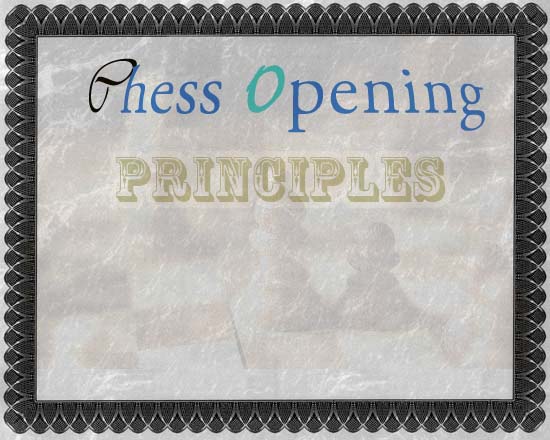As all chess games start with a first move by White and then Black has to decide on his response. It is not surprising that the most common questions from beginners are related to the openings they should adopt when playing as White and the appropriate responses when playing as Black.
In 10 steps to raise your game, we discussed about the general issues that should be considered in taking such decision. You should also be familiar with the principles of good chess strategies as the opening moves lay the foundation of the kind of game you are likely to have with its advantages and disadvantages.
All chess openings aim to achieve certain strategic targets as have been discussed in Chess
Strategy and Chess Tactics in a nutshell as also in Classical Opening Principles in Chess. But as your opponent also has his targets which will try to nullify yours, it is not possible to achieve all the ideal strategic goals unless your opponent is playing badly! Normally, you gain advantages in some areas while conceding some to your opponent. The theoretical ideas behind the openings from both White’s and Black’s sides try to balance these gains and losses.
When playing as White, you will naturally try to play the opening moves that give you a decided advantage. But if your opponent is as good as you are, he will obviously not allow you to follow those lines and choose his moves to take you to areas that give him at least equality at the end of the opening phase. So whatever you may adopt as the opening of your choice, learn the underlying ideas and play to fulfill those to the extent possible. The same goes for you playing as Black in preparing the responses against White’s moves.
After saying all these, we are now giving a list of the most popular opening moves by White and corresponding responses by Black as per the basic data available at Wikipedia but spread over its different pages. What we have done is to make a gist by combining those data to give you a kind of ready reckoner for the most popular combination of first moves by White and Black and the ECO codes that relate to those first moves. We have included only those first moves which are estimated to occur in at least 2% of the games used by Wikipedia to prepare the statistical data. It appears that the following set of first moves cover 86% of the games.
| White’s 1st move | Black’s response | Frequency | ECO codes | Nature of Game |
| e4 | c5 | 18% | B20-B99 | Semi-open |
| e4 | e5 | 11% | C20-C99 | Open |
| e4 | e6 | 6% | C00-C19 | Semi-open |
| e4 | c6 | 3% | B10-B19 | Semi-open |
| e4 | d6 | 2% | B07-B09 | Semi-open |
| e4 | d5 | 2% | B01 | Semi-open |
| d4 | Nf6 | 20% | A45-A79, D70-D99, E00-E99 | Semi-closed |
| d4 | d5 | 10% | D00-D69 | Closed |
| d4 | e6 | 2% | D31-D49 | Semi-closed |
| Nf3 | Nf6 | 5% | A05 | Flank opening |
| Nf3 | d5 | 3% | A06-A09 | Flank opening |
| c4 | Nf6 | 2% | A15-A19 | Flank opening |
| c4 | e5 | 2% | A21-A29 | Flank opening |
You can understand that after these first moves, the subsequent moves can take you to a wide variety of openings as apparent from the number of ECO codes shown against each set of first moves. The nature of game that may arise is only a broad indication. From the applicable ECO codes, you may choose one or several lines of play that most suit your personal preferences.




